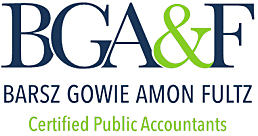Acquiring another company can be an effective way to grow your business, but transactions typically require capital. Quite often, the cost of the transaction is just the beginning. Post transaction, funds may be necessary for integrating the businesses, equipment upgrades, personnel changes, relocations, and new sales and marketing initiatives.
If you’re unprepared to finance the purchase and follow-on costs, you may find financing an acquisition daunting, but it doesn’t have to be. There are multiple vehicles for funding an acquisition, and you can combine various sources to fund the purchase and grow your business. In this article, we will discuss nine different types of acquisition financing you should consider.
Seller Financing
A motivated seller may be willing to act as a lender to fund a portion or the entire purchase price of a business. Sellers typically require a down payment and charge interest like a typical bank. They also often require the assets or stock of the company to serve as collateral for the loan if fully financed by the seller. Otherwise, seller financing is typically subordinate to bank debt if partially financed by the seller. This type of financing is often most attractive during a buyer’s market – when sellers consider financing a way to expedite the sale of their business. The seller may provide more flexible terms than a bank to help set the buyer up for success. This financing can help expedite a sale while providing the seller with a good investment vehicle that offers long-term cash flow.
With seller financing, the seller may stay involved with the business for a period to smooth the transition and ensure profitability. Depending on your circumstances, this could be an advantage or a drawback for the buyer.
From a seller’s perspective, the tax due on the sale of their business may be less in the year of sale if they offer seller financing. This is considered an installment sale, and the seller recognizes the gain over time based on the capital gain of the sale as a percentage of the principal received/total amount of the note.
Seller financing may carry greater risk than getting paid in full because if the buyer runs into financial difficulty, it may be challenging to get paid for the sale of the business.
Bank Loan
Banks tend to be the first source of funding that comes to mind when considering an acquisition. While it may be one of the more traditional ways to secure financing, the amount of funding may not be sufficient.
Bank funding will be highly dependent on the strength of the acquiring company, the hard assets being acquired, and the historical financials of the target company. Acquired assets such as real estate and inventory can serve as collateral for the loan. If the acquisition is primarily an operating business with few assets, a bank will need to get comfortable with the historical financials and post-acquisition projections.
A bank loan may provide an acceptable interest rate, but the bank will typically take a first position in the company’s assets. It may not provide enough capital to fund the entire acquisition. Thus, secondary funding or cash investment is often needed. Finally, a bank loan usually has covenants that require the company to maintain certain liquidity and debt ratios or risk default.
It will be helpful if you own a profitable business and if the company you’re acquiring is in the same industry as your business. If the bank has a relationship with you and knows your past business experience, they may look more favorably on financing an acquisition.
Small Business Administration Loan
The Small Business Administration (SBA) has several different loan programs, such as the 7(a) loan, that can help with an acquisition. With an SBA loan, an authorized bank will perform the due diligence and make the actual loan. The SBA will then guarantee a significant portion of the loan, thereby reducing the risk to the bank.
Most 7(a) loans have a maximum loan amount of $5 million, and the SBA will guarantee up to $3.75 million (75%). Since authorization is required from the SBA, the process and time needed to obtain an SBA loan can be lengthy. There are also a variety of guidelines and restrictions for an SBA loan. For example, the funds cannot be used for a partial acquisition – it must be for 100% of the equity.
An SBA loan may be better for a small business owner who does not own a business and wants to purchase one. The past financial statements and proforma financial statement projections illustrate that the company can service the debt; a bank may be more willing to loan the money because the SBA will guarantee the debt. As mentioned above, this ensures less risk to the bank.
Mezzanine Debt
While a bank is typically a senior lender with a first position on a company’s assets, buyers might also use mezzanine debt, a hybrid form of subordinated debt and equity. Mezz debt includes an equity component, usually in the form of warrants, that enables the lender to convert to an equity position. Mezz debt is subordinate to ordinary debt but has priority over equity. From a cost standpoint, mezz debt commands a higher interest rate than typical debt but may offer interest-only payments and sometimes includes provisions that allow the interest to accrue if the business does not have sufficient funds.
Private Equity
Private equity (PE) investors are typically investment firms that provide capital for businesses in exchange for equity. PE firms often have deep expertise and connections in specific industries; this type of capital has many advantages. However, PE firms will take an equity stake in the business, have certain rights, often have a preferred class of stock, and require an eventual exit. Since most PE firms have sizable investment minimums, this type of investment is more appropriate for larger transactions.
Private Investment
For smaller firms, the option for private equity still exists but is typically raised from private investors or friends and family. So instead of raising a lump sum, the business raises smaller amounts from various investors. Private investment takes time to raise and can significantly expand your capital table.
But, the investors tend to be less active than professional private equity investors and do not have predetermined timetables for exiting investment and returning capital.
Earnout
Earnouts are common in transactions, especially those that require existing clients to continue with the business. Instead of a buyer paying cash upfront for the entire company, a portion may be paid out based on the company’s future performance. With earnouts, the seller can command a higher payout from the buyer by mitigating the risk of losing customers and future cash flow. The buyer can minimize the cash needed for the transaction and use future cash flow to pay a portion of the sale price.
With earnouts, the seller often maintains a role to help with the transition and ensure clients remain with the company. This aligns both the seller and buyer for the success of the business.
Rollover Equity
To reduce the cash outlay, a buyer can offer equity in their company as part of the deal. The seller may see the long-term potential of the combined companies and want to benefit from the future upside. Like an earnout, the seller may take an active role in the acquiring company, especially during the transition.
Leveraged Buyout Strategy
A leveraged buyout is a transaction where a company is purchased using a combination of debt and equity, mostly debt. The buyer typically takes out a loan to cover most of the purchase price, with a small portion being covered by their cash or equity from investors. Typically, the target company’s assets are used as collateral for the loan.
This high-risk strategy can lead to greater rewards if you believe the target company will be profitable in the long run. Leveraged buyouts can pay off quite well but may only be practical for situations where future cash flow can cover the debt service.
Leveraged buyouts also work great for mature companies acquiring businesses in their growth stage. The acquiring company will need a formidable asset base and solid management team to ensure the merger will be profitable. It can be a great way to bring inefficient organizations back on track, but the heavy debt burden increases the risk of default.
Depending on the size of the acquisition, it often makes sense to combine more than one method of financing. This article is intended to provide a brief overview of typical acquisition funding sources and is not a substitute for speaking with one of our expert advisors. Please get in touch with our office for assistance if you’re considering an acquisition and would like to discuss your financing options. To learn more about our accounting, tax, and advisory services for businesses, visit our website.




